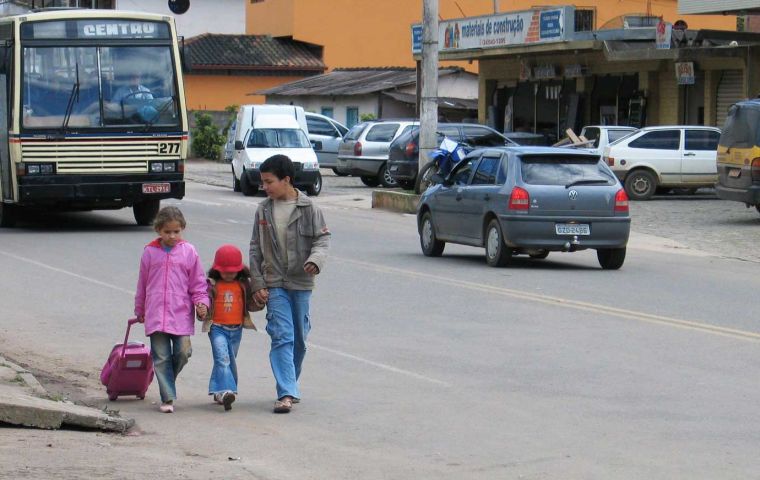MercoPress. South Atlantic News Agency
Global Road Safety Week: over 23.00 pedestrians killed yearly in Latin America and the Caribbean
 Pedestrians in Latam and the Caribbean are the most vulnerable group of road users
Pedestrians in Latam and the Caribbean are the most vulnerable group of road users More than 23,500 pedestrians were killed on the roads in Latin America and the Caribbean in 2010, making pedestrians the most vulnerable group of road users in the region.
In observance of the U.N. Global Road Safety Week, the Pan American Health Organization/World Health Organization (PAHO/WHO) is urging countries to make roads safer for pedestrians through action ranging from better enforcement of speed limits and drunk-driving laws to creation of pedestrian-friendly infrastructure such as speed bumps, refuge islands, and raised crosswalks.
“Walking is a daily necessity for many people, especially in developing countries, and it’s also good for one’s health and the environment,” said Eugenia Rodrigues, PAHO/WHO advisor on road safety. “But traditionally, motor vehicles have been given more attention and space in our countries’ road systems. We urgently need to take steps to increase safety for pedestrians on our roads.”
Globally, more than 270,000 pedestrians lose their lives on the world’s roads each year, or 22% of the 1.24 million total road traffic deaths annually, according to WHO.
In the Americas, pedestrians account for 23% of all traffic fatalities region-wide, but the proportion varies across sub-regions: from 25% in the Andean countries to about 27% in the Caribbean and 31% in Central America. Pedestrian deaths tend to occur more frequently in countries where motor-vehicle ownership is low, for example, in El Salvador, where 61.5% of traffic fatalities are pedestrians. They account for a much lower proportion of traffic fatalities in the United States (12%) and Canada (14%), where more than half the population drives automobiles.
In developing countries, children—many on their way to or from school—and young adults make up a high proportion of pedestrian fatalities. Males—both children and adults—are overrepresented in pedestrian deaths worldwide.
In addition to deaths, millions more pedestrians suffer injuries, which can require long hospital stays and lengthy rehabilitation or be permanently disabling. Given the high costs of care, these injuries can throw victims and their families into poverty and add to the burden of already fragile healthcare systems.
A newly released publication produced by WHO and partners, Pedestrian safety: a road safety manual for decision-makers and practitioners, highlights measures that are urgently needed to better protect pedestrians. They include:
• Adoption and enforcement of new and existing laws to reduce speeding and curb drunk driving
• Better infrastructure, including sidewalks, raised crosswalks, refuge islands, speed bumps, rumble strips and roadway lighting
• Better design of mass transit routes
• Enhanced trauma care systems to guarantee prompt treatment for those with life-threatening injuries.
The Second U.N. Global Road Safety Week is being celebrated worldwide on May 6-12, as part of the Decade of Action for Road Safety 2011-2020, whose goal is to save 5 million lives.
During the week, road safety events are being held in some 100 countries including national policy discussions, radio and TV debates, public walks and actions such as repainting pedestrian crosswalks and enhancing safe walking routes to schools.
“We know what works to make pedestrians safer,” said Rodrigues. “As our countries develop, we need to ensure they incorporate pedestrian safety into our transportation systems. Walking should be a safe option for people everywhere.”




Top Comments
Disclaimer & comment rulesCommenting for this story is now closed.
If you have a Facebook account, become a fan and comment on our Facebook Page!